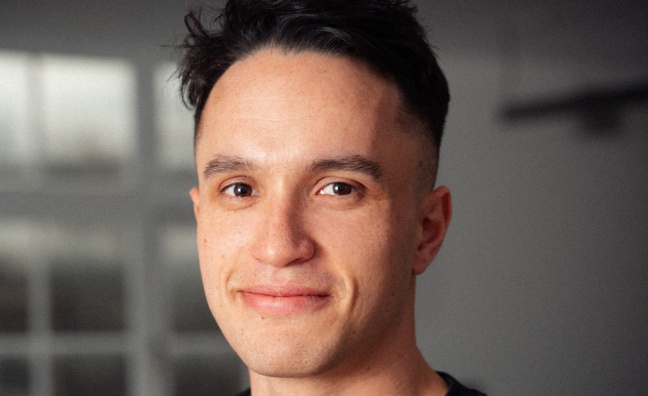The Barbie movie is dominating the singles chart Top 5 with its Mark Ronson-produced soundtrack (released via Atlantic Records), in addition to its impact on the box office and the digital zeitgeist.
The Round agency worked on the digital campaign for the soundtrack. The company’s client roster includes labels such as Atlantic Records, Columbia, Def Jam, and Polydor and music festivals and events companies like AVA, Broadwick Live, Lost Village and Truck Festival. Its work with artists including Alicia Keys, Beyoncé, Calvin Harris, Fred Again.., Lana del Rey, Olivia Rodrigo and Stormzy has generated more than 1.5 billion engagements around the world.
Here, Simon Friend, chief operating officer of the Round agency, opens up about the Barbie campaign and the lessons for the music business…
The Barbie movie has not only dominated the singles chart Top 5 with its Mark Ronson produced soundtrack and shattered box office records with its record-breaking opening weekend, it has had a palpable impact on the digital zeitgeist. But now that the pink dust is beginning to settle, what does the data actually tell us about what drove Barbiemania and, importantly, what can the music industry learn from the story of this cultural phenomenon?
Think pink?
While the buzz ahead of the film was intense, it reached a fever pitch immediately after the movie's debut; and at that point, there was also a marked shift in attitudes towards the film. Data collected from creator activity on TikTok shows that the carefully curated line-up of artists and songs on the album had a pivotal impact on defining attitudes towards the film, contributing to the fundamental reshaping of the Barbie brand.
Before the movie's release, data sourced via Round’s proprietary technology – which allows us to identify, understand and leverage trends that are emerging on TikTok in real time – showed what many might have expected: that the excitement surrounding the movie was focused on its materiality, with conversations revolving around the film's striking aesthetics, giving rise to the #Barbiecore craze.

#Barbiecore celebrates the neon pink aesthetics associated with Mattel’s doll and, during the three weeks before the movie hit screens, the hashtag accumulated around 300 million views. To put this acceleration into perspective, the hashtag has gained approximately 700 million views in total since its inception in the summer of 2022. #Barbiecore, along with its sub-trends #Barbieshake, the #Barbiefeet challenge and ‘Hi Barbie’, surfaced in response to the style and vibe of the initial trailer. Alongside this, Aqua's 1997 hit Barbie Girl unsurprisingly experienced a resurgence on TikTok, underscoring the role of music and nostalgia in driving movements.
Based on these trends, expectations emerged around the upcoming movie’s narrative. Many anticipated a high-energy, pink-themed experience that resonated with Barbie’s core essence. In response, marketing teams across the music industry were doubtless poised to activate content strategies that capitalised on the ‘pink wave’ to promote associated songs and artists across digital platforms.
#Barbiecore no more
But as soon as the movie and its Mark Ronson-produced soundtrack were released, the real-time public reaction hit the brakes and took an unexpected U-turn, pulling the rug from under any carefully devised #Barbiecore influenced marketing plans.
According to Round’s data, #Barbiecore tracks Dance The Night, by Dua Lipa, and Nicki Minaj and Ice Spice’s collaboration, Barbie World, initially gained popularity, with around 15,000 daily videos each after the film's release. However, their trajectory quickly plateaued.
Surprisingly to all perhaps, except the team behind the film’s subversive marketing strategy, it was Billie Eilish's introspective ballad What Was I Made For that instantly defined Barbie's cultural shift. The song immediately exploded following the film's release with 30,000 TikTok videos per day, marking a paradigm shift as audiences ditched #Barbiecore in favour of the film’s more philosophical message, reflected in the song’s meaningful lyrics and poignant melody.
According to Round’s data analysis, in the hours following the release, conversation on TikTok quickly took a 180 turn: rather than a party of pink confetti, the platform was fact filling with themes of existential dread, rejecting the materialism that defined the pre-release anticipation. The most viewed TikTok video since release is captioned: "Went into the Barbie movie thinking it was going to [be] ‘teehee giggle haha’ and was left crying hysterically questioning my existence."
Be like Gymnast Barbie, not Weird Barbie
TikTok has established itself as a powerful cultural barometer. Having access to the real-time data to recognise the cultural shift that was evidencing itself through the platform was critical to the record industry’s ability to ensure they struck the right tone with any content marketing activated in response to Barbie. But crucially, it also required agility and flexibility to be able to pivot away from any #Barbiecore plans and generate the right results for their brands, artists, songs and investment.
Staying attuned to TikTok’s reactive and fast pace is essential in today's constantly changing landscape: adaptability is critical and businesses must be ready to respond when trends unexpectedly shift. Consumers now hold the reins in shaping trends and effective content strategies are being determined by the data from bubble up culture, which is playing out on platforms like TikTok. Failure to do so will only leave them out in the doldrums like Weird Barbie.









